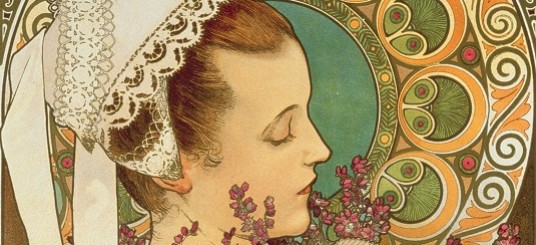
Despite the powerful impact of Mucha’s style, the aesthetic and philosophical ideas behind its development are less well known.
This exhibition draws on the latest research to examine the theoretical aspect of his style, which evolved as 'a language' for communication with the wider public, where decorative motifs drawn from his native Moravia as well as other folk cultures played an important part.
Including some 100 works from the Mucha Trust Collection, and a selection of works from the musée départemental de Bretagne in Quimper, the exhibition will look at the hitherto lesser known relationship between Mucha and Brittany, especially his interest in the folk art of the region, and will explore how it is reflected in his famous posters as well as in his pursuit of the expression of national identity.
Alphonse Mucha saw popular art, especially traditional costumes and decorative motifs, as an important way of expressing cultural and ideological identity. It is probably this way of thinking which explains the affinity the artist felt for Brittany. In addition, the growing interest he showed in bygone Czech culture and its link with the Celtic heritage seem to have encouraged him to explore traditional Breton art.
Mucha travelled regularly to Brittany, where he spent his holidays by the sea talking philosophy with his friends and making plans; his visits in 1902-1903 appear to have particularly inspired him. Thanks to research carried out jointly by the Mucha Foundation and the Musée Départemental Breton, it appears that a large number of photographs and sketches in the Mucha Trust collections, unidentified up to now, are in fact studies of landscapes and costumes of Brittany, many of them connected to works done by the artist at this time. The documents shown here confirm the interest shown by this genius of decoration in flourishing decorative popular traditions and traditional costumes and embroidery in particular.
